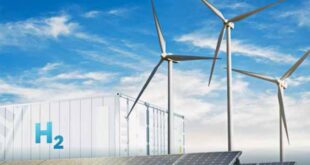Hydrogen is the fuel of the future – and always will be. That’s the industry joke and. as Homer Simpson would say. it’s funny because it’s true. Or at least it has rung true for a long time. General Motors built a car powered by hydrogen in 1966. as Fatih Birol of the International Energy Agency (IEA) points out. It ended up in a museum. At semi-regular intervals since then. hydrogen has been touted as the answer to humanity’s energy needs. After all. it is the most abundant element in the universe and. when burned. releases only energy and water. It can be stored and transported in liquid or gaseous form. is energy dense. and is not subject to intermittent supply. All of these qualities put it ahead not just of fossil fuels. but of renewable alternatives too – at least in potential.
Until now the momentum in renewable energy has been with other sources such as the wind and sun. but converting these into electricity cannot possibly meet all of our energy needs. no matter how cheap or widely used they become. Electricity is unlikely ever to be suitable for running heavy lorries or airliners. for example. nor could it meet all our heating needs or replace fossil fuels in energy-intensive industries such as those involved in the production of iron. steel and cement.
And as hydrogen is not found in pure form on earth and so must be produced. it is not as clean or green as it might at first glance appear. Demand for hydrogen – coming mostly from its traditional uses in the manufacture of ammonia and in the oil-refining and steel industries – has climbed steadily. rising threefold since the mid-1970s and today that demand is mostly met by hydrogen produced from natural gas. The manufacturing process itself consumes energy. today mostly coming from fossil fuels. Production of hydrogen is responsible for around 830 million tonnes of carbon dioxide per year. equivalent to the emissions of the UK and Indonesia combined.
The rise of “green“ hydrogen
The rise and ever-declining costs of wind and solar have given hydrogen a new lift. however – if hydrogen were instead produced by electrolysing water using electricity from renewable sources (so called “green hydrogen“). then we would have at our disposal an abundant source of genuinely green energy. Less than 0.1% of global dedicated hydrogen production today comes from water electrolysis. but the Hydrogen Council. an industry body. thinks that by 2050 green hydrogen could provide almost a fifth of total power consumed globally and thereby avoid six billion tonnes of greenhouse-gas emissions per year – roughly the equivalent of those emitted by the US annually.
This has obvious attractions for governments and companies looking to reduce their carbon footprints. and helps explain why the shares in some producers of hydrogen and manufacturers of fuel cells – which convert the chemical energy in a fuel such as hydrogen into electricity – have soared to their highest levels in decades. The companies enjoying the attention are themselves often small and loss-making. and it may be years before they see any profit (see box on page 26). But the bullish excitement of investors is explained by the prospect for soaring future demand as societies transition from fossil fuels to cleaner alternatives. Hydrogen could clearly play a role in that – but how big a role is the question.
Here comes the cold water
Before we get too carried away. we should bear in mind that hydrogen has been “hailed as a pollution-free substitute“ before. as Jonathan Ford points out in the Financial Times. And there’s a reason why hydrogen today accounts for just 4% of final energy use: it’s costly to manufacture and bulky. making it cumbersome and expensive to handle.
At present prices. green hydrogen comes in at $6 kg. Transform that into the energy equivalent of hydrocarbons and it equates to a “recession-inducing“ oil price of $270 a barrel. Even if you factor in likely future efficiencies and price falls. you still only get to $45 oil in the long term before distribution costs. Such considerations make hydrogen “relatively uneconomic over anything but short distances“. If it were to become the basis of a new “hydrogen economy“. as some predict. the problem then is who would fund the cost of investment in infrastructure in advance of demand.
 Iran Energy News Oil, Gas, Petrochemical and Energy Field Specialized Channel
Iran Energy News Oil, Gas, Petrochemical and Energy Field Specialized Channel



